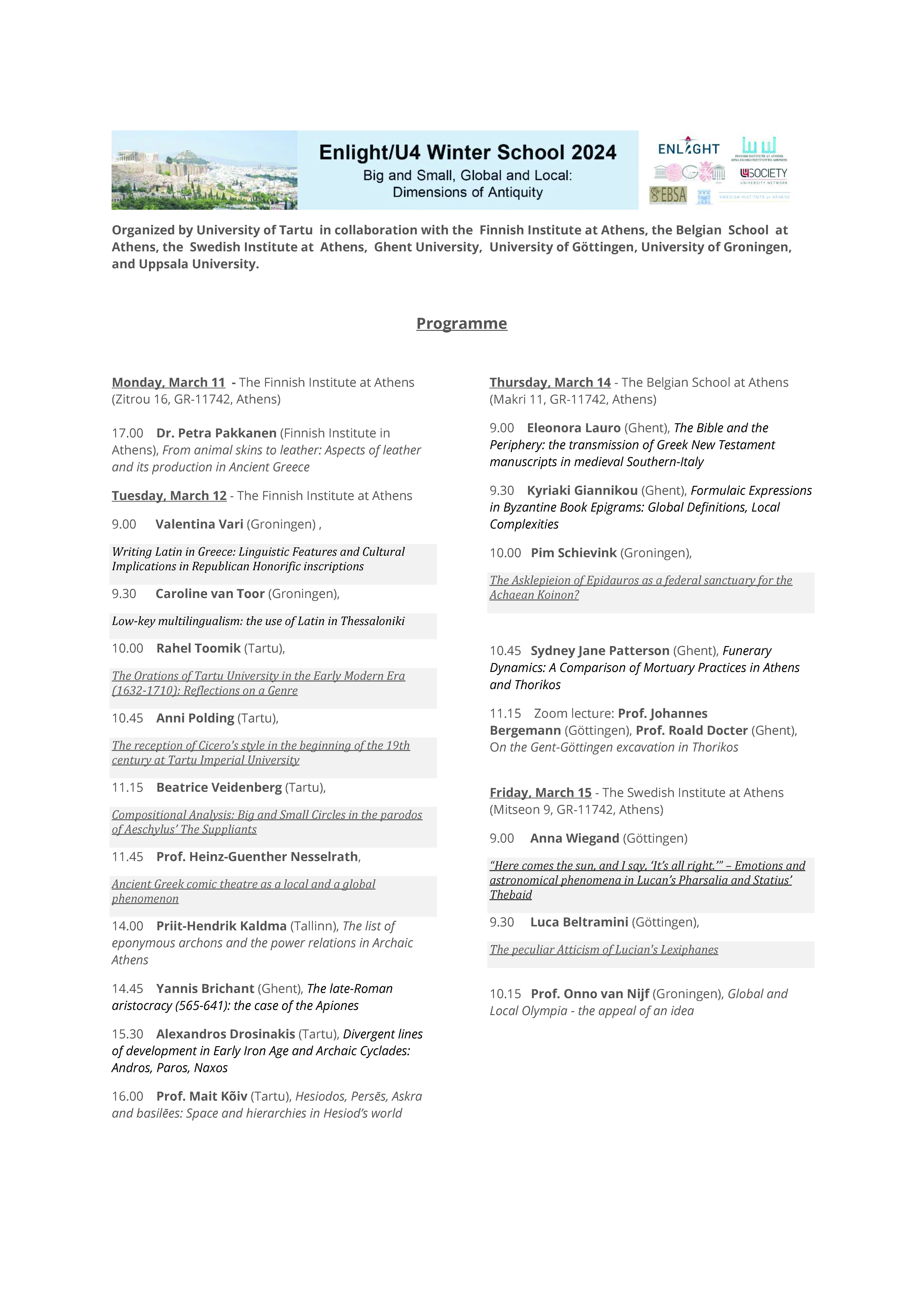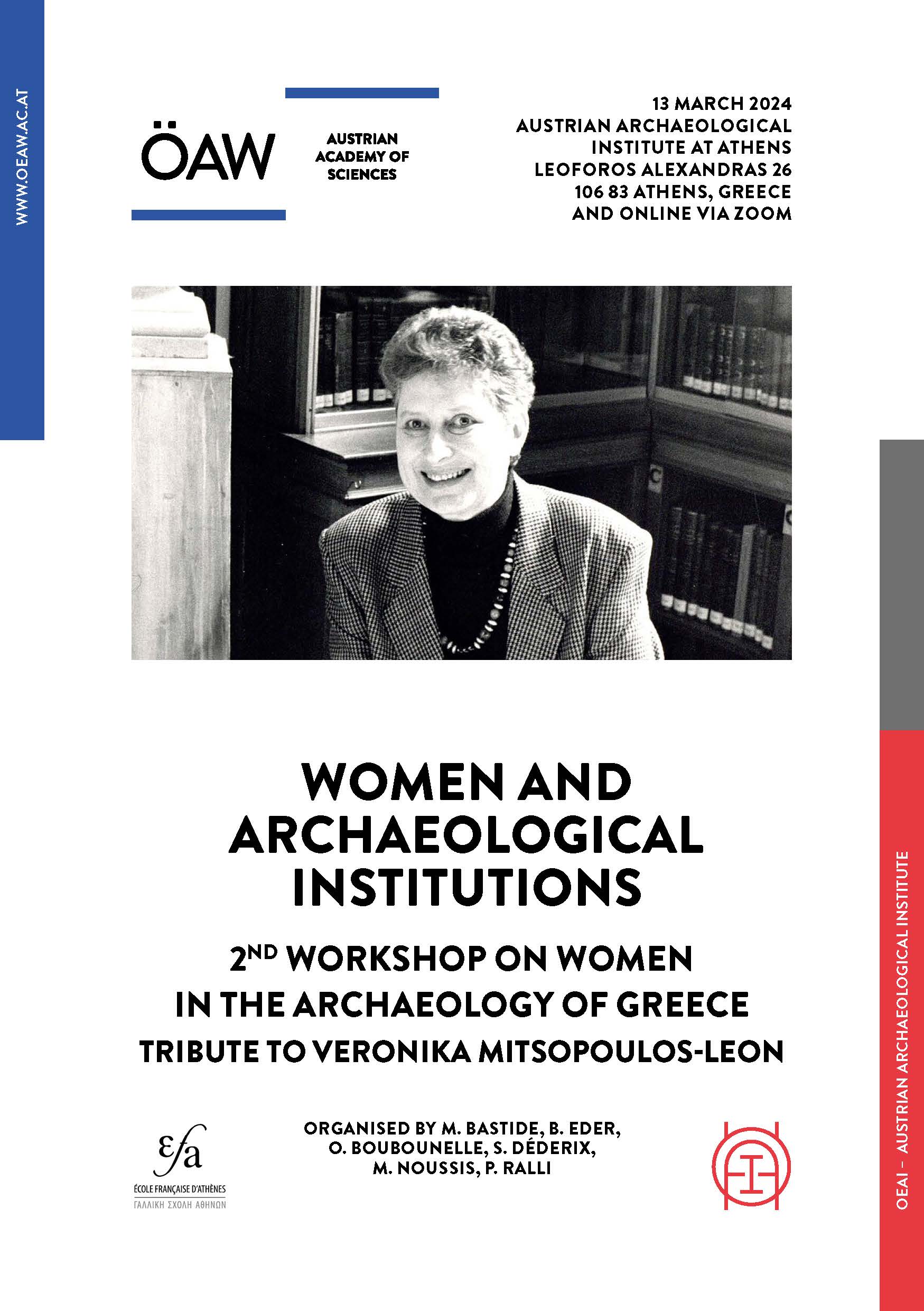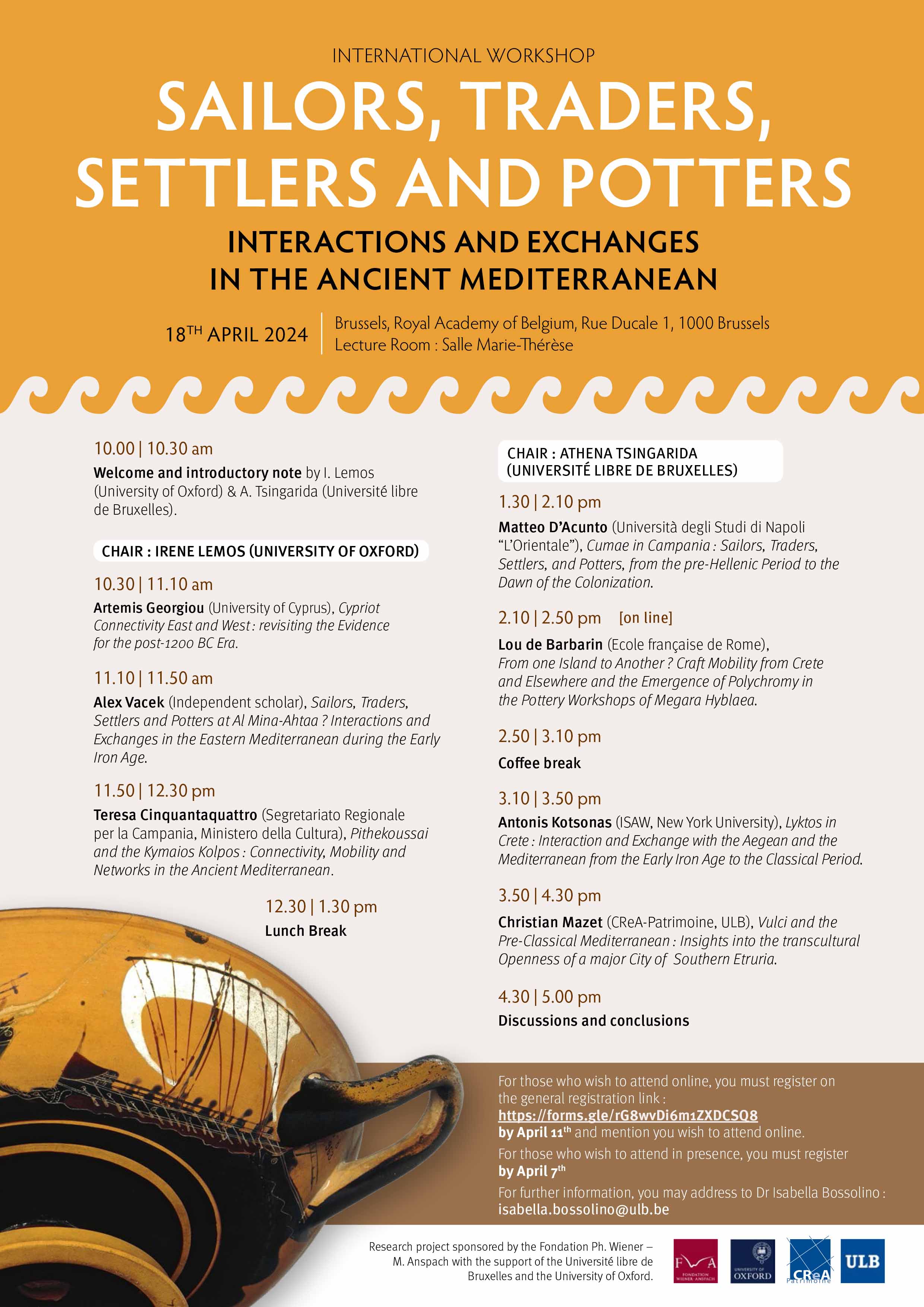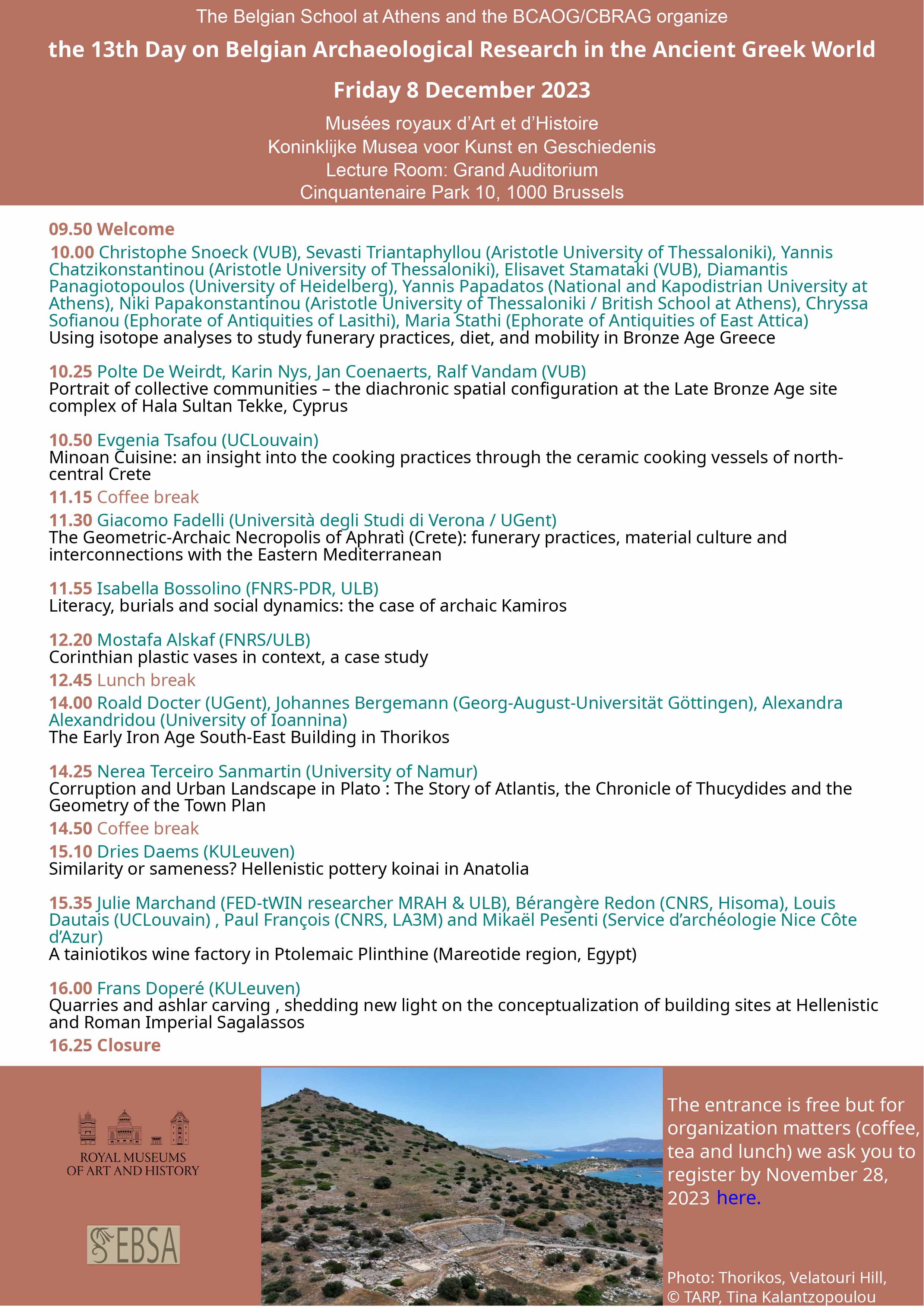Welcome
Welcome to the website of the Belgian School at Athens. We are primarily engaged in archaeological research in Greece, which especially includes excavation and survey but also material studies and the publication, presentation and preservation of results. Our main projects are the excavations at Thorikos in South Attica (Lavrion Attikis), and, on the island of Crete, at Sissi (Agiou Nikolaou) and at Itanos (Sitias), both in the Lasithi province.
Apart from these projects, we host a library with a large number of Belgian publications on Greek archaeology, we organise conferences, seminars, courses, and colloquia.
Through this website we hope to reach all those interested in Greek archaeology. Our calendar highlights not only our activities in Greece but also scientific activities related to Greek archaeology organized in Belgium. You can also find guidelines on excavation and research permits, Belgian academic institutions involved in research on Greek soil and heritage
The director
Athena Tsingarida






